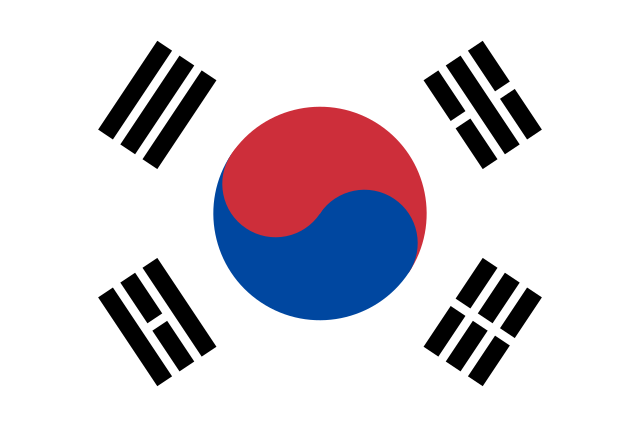Top Qs
Timeline
Chat
Perspective
List of active Republic of Korea Navy ships
From Wikipedia, the free encyclopedia
Remove ads
The Republic of Korea Navy has about 160 ships in commission (a total displacement of about 232,285 tonnes[1]).
This article may require cleanup to meet Wikipedia's quality standards. The specific problem is: Use of WP:REFGROUP would allow bidirectional linking in table notes. (February 2021) |



The vessels are categorized into four levels. A first-rate ship (Sohn Wonyil-class SS, DDG, DDH, LPH, MLS, and AOE) is commanded by a captain; a second-rate ship (SS, FFG, FF, PCC, LST, ATS, and ASR) by a commander; a third-rate ship (PKG, MSH, and MHC) by a lieutenant commander; and a fourth-rate craft (PKMR, PKM, and LSF) is commanded by a lieutenant or a warrant officer.
The ROK Navy employs the U.S. Navy-style letter based hull classification symbols to designate the types of its ships and hull numbers to uniquely identify its vessels (e.g. DDH 975). The names are that of the historical figures, provinces, cities, counties, peaks, lakes, islands, and birds. The Chief of Naval Operations selects the names of ships.[2]
The ship prefix for all the commissioned ROK Navy ship is ROKS (Republic of Korea Ship) when the names of ships are written in English.
Remove ads
Submarine fleet
Summarize
Perspective
Submarines
Submarines (SS) are named after historical figures.
- ROKS An Junggeun (Sohn Wonyil class)
- ROKS Lee Eokgi (Jang Bogo class)
- ROKS Dosan Ahn Changho (Dosan Ahn Changho class)
Remove ads
Surface fleet
Summarize
Perspective
Destroyers
Destroyers (DDG, DDH) are named after historical figures.
- ROKS Sejong the Great (Sejong the Great class)
- ROKS Munmu the Great (Chungmugong Yi Sunshin class)
- ROKS Gwanggaeto the Great (Kwanggaeto the Great class)
Frigates
Frigates (FFG, FF) are named after provinces and large cities that names previous ROK Navy destroyers had.
- ROKS Gyeongbuk (Ulsan class)
- ROKS Incheon (Incheon class)
- ROKS Seoul (Daegu class)
Corvettes
Corvettes (PCC) are named after cities, with the exception of Sinseong (one of Admiral Yi Sunshin's battle grounds).
- ROKS Bucheon (Pohang class)
Patrol vessels
Yoon Youngha class (PKG) is named for Navy heroes.
Chamsuri (PKM) means the sea eagle in Korean.
- ROKS Hyun Sihak (Yoon Youngha class)
- A Chamsuri-class patrol craft and a Sohn Wonyil-class submarine on background
Amphibious warfare ships
Dokdo class (LPH) is named for islands. Cheonwangbong class and Gojunbong (LST) class are named for mountain peaks.
Solgae (LSF) means the black kite in Korean.
- ROKS Dokdo (Dokdo class)
- ROKS Cheonwangbong (Cheonwangbong class)
- ROKS Birobong (Gojunbong class)
- ROKS Solgae 623 (Solgae 621-class)
Mine warfare ships
Nampo class and Wonsan class (MLS) are named after places known for naval mine operations during the Korean War.
Yangyang class (MSH) is named for sea-side counties. Ganggyeong class (MHC) is named for towns that names are previously used by decommissioned minesweepers.
- ROKS Wonsan (Wonsan class)
- ROKS Ongjin (Yangyang class) and ROKS Goryeong (Ganggyeong class) on background
Auxiliary ships
ATH is named for an island where Admiral Yi Sunshin's HQ was located. AOEs are named for lakes.
Tongyeong class have legacy names of previous ROK Navy ships. ASR is named for a base established by Commissioner Chang Bogo.
Singiwon and Sinsegi (AGS) mean a new era and a new century in Korean, respectively.
Mulgae (LCU) means the fur seal in Korean.
- ROKS Soyang (Soyang class)
- ROKS Cheonji (Cheonji class)
- ROKS Tongyeong (Tongyeong class)
- ROKS Cheonghaejin (Cheonghaejin class)
Remove ads
Major service craft
The hull number of service craft starts with Hangul. Service craft have no name.
See also
Notes
a. Hull number: The ROK Navy does not use the number '4' when assigning hull numbers to their ships since ROKS Jirisan (PC 704; formerly USS PC-810), during the Korean War, struck a mine and sank in December 1951, resulting in death of all sailors aboard. Currently only the hull numbers of the mine layers and submarine tender end with number '0'. The hull numbers of the submarines start with the number '0'.
b. Romanization of Ship names: Romanization is according to Revised Romanization of Korean (adopted in 2000), with exceptions of personal names. Names of ships commissioned before 2000 might have been romanized according to McCune–Reischauer. Examples of changes (M-R → RR): Chinhae → Jinhae; Kangnung → Gangneung; Kimpo → Gimpo; Kyongju → Gyeongju; Pusan → Busan; Taegu → Daegu.
c. Delivery date: The date when the ROK Navy acquires a ship from the shipbuilder.
- Fiber Reinforced Plastic (FRP) monocoque hull structure.
- Fiber Reinforced Plastic (FRP) monocoque hull structure.
Remove ads
References
External links
Wikiwand - on
Seamless Wikipedia browsing. On steroids.
Remove ads






















